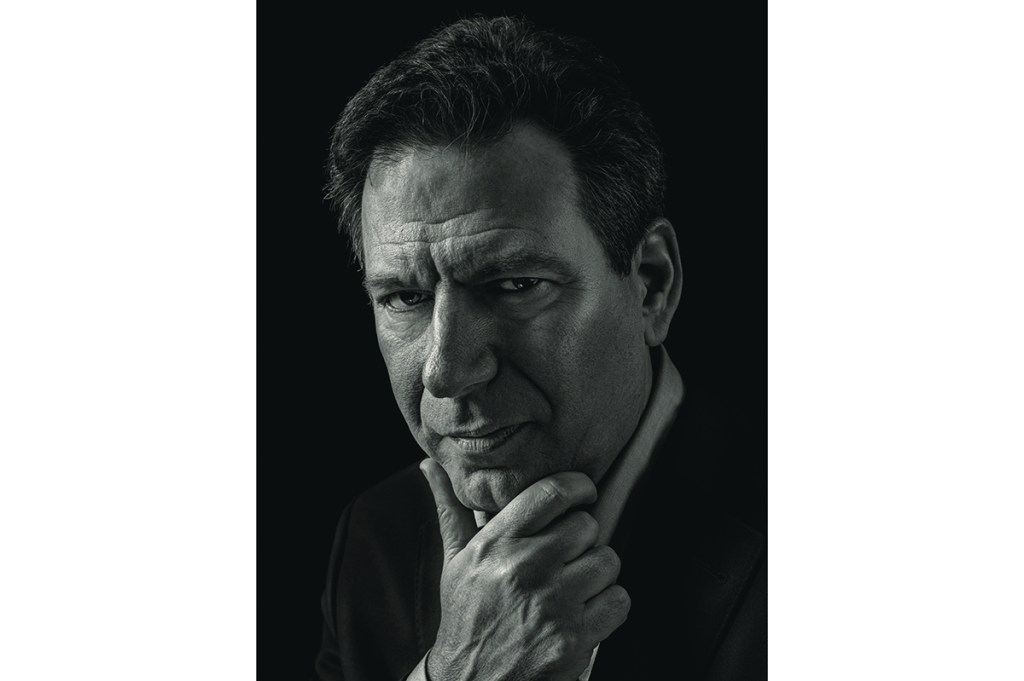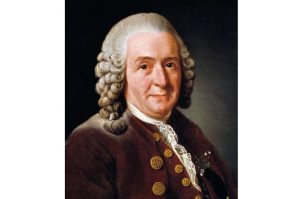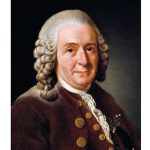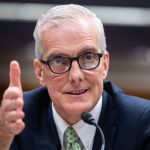Robert Kaplan’s new book, The Good American, takes as its epigraph V.S. Naipaul’s observation that ‘Pessimism… can drive men on to do wonders.’ It’s tempting to remark that this dry aphorism is as true about Kaplan’s life and work as it is of his subject, the humanitarian Robert Gersony. But in both cases this would be, if not exactly wrong, then incomplete.
Robert Gersony is a man who indeed did wonders. The son of Holocaust survivors, he dropped out of high school, earned a Bronze Star in Vietnam and then, Kaplan writes, ‘spent 40 years interviewing… over 8,000 refugees, displaced persons, and humanitarian workers in virtually every war and disaster zone on earth’. The results were the ‘Gersony reports’, legendary for their granular detail and on-the-ground reporting, which he wrote for the various arms of the US government (and UN and others) that contracted with him over the years.
Gersony, Kaplan writes, was ‘God’s own witness’. He made a difference. On more than one occasion he helped change foreign policy: his admirers included former secretary of state George Shultz. The US government listened to Gersony because he placed his commitment to human rights ‘within the framework of national interest’. They listened because he spoke their language, and because when it mattered he was there. Across scores of countries and over decades, you would find him: quiet, thoughtful and always, always taking notes (he never used a tape recorder). He understood two things above all: that truth lies ‘in the field, not in Washington’ and that ‘geography and culture are the beginning of all knowledge’.
If The Good American is a biography of an extraordinary man, it is also about an approach to the world that has informed Kaplan’s career no less than Gersony’s. Kaplan acknowledges their similarities. Both, he says, are introverts and also ‘cowards’ — by which he means they both felt fear in the many dangerous situations in which they nevertheless chose to remain (which seems to me to be the definition of bravery). Both ‘could have gone wrong’ early in life. Most of all, both were perennial freelancers, in work and ‘in the spiritual sense’. Though each held many affiliations over the course of their careers, neither ever had an institution to call home. Kaplan told me that he decided to write the book because it’s a great story, but also because of something that emerged when the two men had dinner in Washington:
‘I said to [Gersony]: “You’ve been in the State Department your whole life, where did you go to school?” And I expected him to say Harvard, Yale or Princeton or something like that. And when he said embarrassedly, “I didn’t go to college.” I said, “Where did you go to high school?” And he said, “Well, I never graduated high school either. I went to Vietnam.” That’s when it clicked. That’s when I said wow! This is an extraordinary individual.’
Of all the extraordinary things about Gersony’s life, this seems mundane. But it matters a lot. For Kaplan, having neither an Ivy League education nor even a high school diploma means something very specific: being someone who ‘doesn’t quite fit the part’. If Gersony didn’t fit, then neither does Kaplan. He’s the working-class kid who attended a public high school and the University of Connecticut before spending 40 years in a media and policy world dominated by the private school and Ivy League ‘elites’ who recur throughout his articles and books. Kaplan believes he and Gersony are outsiders, and this belief underlies a worldview with very specific ideas about the nature of reporting and the proper conduct of foreign policy.
Kaplan spent his early career wandering about the Mediterranean and the Middle East. For much of that time he was in Israel, where he served in the military for a year. In 1985, aged 29, he left Israel for communist eastern Europe, and then moved to Athens, Greece to continue reporting on Europe and the greater Middle East. In Athens he wrote his first books and began a 30-year relationship with the Atlantic magazine. Kaplan had no journalistic infrastructure: no bureau for support and no official correspondent’s job. His home was the field, his only perspective that of a reporter on the ground.
If Gersony’s ‘alternative’ background is what sparked Kaplan’s interest, then Gersony’s approach to his work and the world is what powers The Good American over 500 pages. The title unselfconsciously echoes Graham Greene’s The Quiet American, and the novel’s shadow looms over the text. Kaplan quotes Greene’s description of his quiet American, Alden Pyle, who sees Vietnam ‘only through the abstract mental concepts about democracy that he had heard in the lecture-hall’. For Kaplan, Pyle represents the elites who moon over abstract concepts formulated continents away, oblivious to the people ‘in Vietnam (or, for that matter, Iraq) [who] did not want democracy or any ism… They want enough rice.’
Gersony, ‘always skeptical of elite opinion’, is Pyle’s political and temperamental opposite. He is the ‘good American’ precisely because his career is driven not by abstract concepts but by immersion in the ‘local complexities of every situation’. His perspective is always from the bottom-up; he knows that the ‘granularity of distant places defeats all theories’. His is the world of reportage over theory, the empirical over the abstract and, above all, ‘what is’ over ‘what should be’. If for Gersony, the truth emerges ‘from the bottom-up, in the specificity of each conflict zone’, then he will always be congenitally opposed to those ‘people in the nation’s capital with their grand schemes [who] only see in shadows’.
These kinds of ideas, borne from early experience, cohered as a worldview for Kaplan in a short but formative period in which he made a global reputation with the publication of Balkan Ghosts (1993) and the 14,000-word Atlantic essay ‘The Coming Anarchy’ (1994). Balkan Ghosts is a regional travelogue written at a time when American media were obsessed with events on the Cold War chessboard of central America. On the ground in the Balkans, Kaplan could see Yugoslavia’s ethnic fissuring. He knew where the danger was.
‘Two concepts are emerging out of the ruins of communist Europe,’ he warned in the Wall Street Journal on November 30, 1989, less than three weeks after the fall of the Berlin Wall. ‘One, “Central Europe”, the media is now beating to death. The other, “the Balkans”, the media has yet to discover.’
The Yugoslav wars broke out 19 months later. The character of war changes with time, but it always brings the same things: disease, death, atrocities and elites. In The Good American Kaplan returns to the Yugoslav conflict through Gersony’s fieldwork there in 1992. The ‘international elite’ that descends upon Bosnia is embodied in the figure of the near-pathologically ambitious Richard C. Holbrooke, the assistant secretary of state for European and Canadian affairs, ‘a force of nature at once inspiring, dominating, intimidating, and infuriating’. Holbrooke, we infer, couldn’t have found Yugoslavia on a map before 1992. Nonetheless, it’s not long before he and various choppered-in flunkies set about diagnosing the problem.
It’s not that Kaplan dislikes Holbrooke; he rather admires many of his qualities. But he is, in part, the figure against whom Kaplan defines his own political thought. Their opposition epitomizes the struggle within US foreign policy since the end of the Cold War, the split between the realists and the liberals (who are often interventionists). In Yugoslavia, the liberal elites have their ideals of the ‘right thing to do’ — and, critically, who is to blame — ready to go:
‘As the saying went, evil only triumphs when good men do nothing. For it was evil men, primarily the Serbian leader Slobodan Milosevič and his band of war criminals, who had caused this mini-Holocaust in the first place. Truly, as these intellectuals and journalists argued, evil does not happen on its own, it is not a matter of dull and inexorable historical processes: rather, it must be a matter of the actions of individuals, who had thus to be defeated and punished.’
Set against this are the facts on the ground, the dictates of realism that Kaplan’s years of reporting had revealed to him:
‘Of course, there was also the issue of ethnic animosities tied to history, geography, and economics. While there were a substantial number of intermarriages in Bosnia, and people there were not weaned from birth to hate, ethnic groups in Yugoslavia and the Balkans could often recall an era of historical greatness when their own kingdoms had spread across southeastern Europe and dominated others, so that territorial claims, real and imagined, overlapped and contradicted one another.’
Then Kaplan adumbrates how these two arguments played out in the imperial institutions of government and academia:
‘There assuredly were evil men, responsible for great crimes, but they arose out of a context of already inflamed ethnic divides. Yet, for many in the intellectual, journalistic, and relief communities, one had to emphasize the former over the latter. For to do the opposite, to put too much emphasis on the ethnic and historical divides, was to submit to determinism and essentialism, academic buzzwords for fatalism and the acceptance of ethnic stereotypes. And fatalism led to doing nothing to stop this war while it was happening.’
In three paragraphs Kaplan captures not only America’s foreign-policy debate from the end of the Cold War to the years just after Iraq, but also its rhetorical tenor. He captures the mixture of geopolitical ignorance and moral cant that so often allowed interventionist arguments to triumph. In his controlled anger, the battle of realism and idealism becomes almost a proxy for the class struggle between the working-class kids doing the hard work out in the field and the Ivy Leaguers safely back home with leisure enough to ponder the abstract while they endlessly lunch — and blunder.
Kaplan did not oppose intervention in Yugoslavia. He emphatically (and correctly) saw it as the right thing to do. He just distrusted the arguments that were made for it. He worried where they might lead — and he was right.
‘The world’s richest nation, one that presumes to great moral authority, cannot simply make worthy appeals to conscience,’ wrote Holbrooke in his memoir of the time. The motivations that drew the United States into Yugoslavia uncomfortably foreshadow George W. Bush’s motives for going into Iraq just under a decade later.
If Kaplan didn’t have a dog in the policy fight before Yugoslavia, he did after it. Here was Holbrooke, secure in the institutions and steeped in Washingtonian wisdom; and there was Kaplan, in the field like Gersony, and steeped in the truths of history and geography. Balkan Ghosts remains pregnant with prescient observation and gorgeous writing. But above all, I now realize, it is a plea to recognize a singular lesson from Kaplan’s Balkan travels. The whole is always many disparate parts. The unified nation-state is really just a multitude of different communities. What seems homogeneous is ethnically variegated and often in opposition to itself. These thoughts are as geopolitically tricky to address as they are politically tricky to acknowledge.
It’s important to understand Kaplan’s subtlety. His critics accuse him of seeing multi-ethnic Bosnia as congenitally ripe for conflict. Balkan Ghosts, which places Yugoslavia in its regional context, doesn’t underplay ethnic divisions. It describes clearly that the Balkans have long been an arena for violence and genocide. But Kaplan understood that though these problems might be acute in the Balkans, they were the natural condition of all nation-states: ‘So what if the Balkans are a confused, often violent ethnic cauldron? Welcome to much of the world.’
Kaplan’s genius was to recognize this essential truth during the height of post-Cold War triumphalism when faith in the efficacy and homogeneity of ‘the West’ reigned supreme, and its building block, the nationstate, amounted almost to a fetish. Kaplan’s heterodoxy, after Yugoslavia, amounted to blasphemy.
Almost 30 years on, with social media sending liberal societies tumbling into the weeds of conspiracy and hate, the truth of his insight is clear. The attack on the Capitol on January 6 happened for many reasons, but one of them is that, on both left and right, online and on TV, grifters and political charlatans have exploited America’s ethnic divisions. Kaplan understood almost 30 years ago how this could occur anywhere.
Balkan Ghosts set the foundations of Kaplan’s worldview. ‘The Coming Anarchy’ applied his reporter’s education and historical perspective to predict the future. Though he passes through Turkey, India and Pakistan, he identifies west Africa as prefiguring the problems the world would face:
‘West Africa is becoming the symbol of worldwide demographic, environmental, and societal stress, in which criminal anarchy emerges as the real “strategic” danger. Disease, overpopulation, unprovoked crime, scarcity of resources, refugee migrations, the increasing erosion of nation-states and international borders, and the empowerment of private armies, security firms, and international drug cartels are now most tellingly demonstrated through a West African prism… West Africa’s future, eventually, will also be that of most of the rest of the world.’
Again the prescience is striking. In 2020, it’s not Cold War fears of nuclear Armageddon or industrialized war between states that loom large, but the anarchic specter of Kaplan’s west Africa.
How did Kaplan see clearly what so few others could grasp? He saw the terrain: the geography.His critics accuse him of going too far: of geographical or environmental determinism. In An Empire Wilderness (1999), a travelogue ‘into the American future’, Kaplan quotes Daniel Kemmis, the former mayor of Missoula, Montana: ‘Lincoln, too, was a determinist, Kemmis added… Lincoln knew that American geography determined that we would stay united, provided we were willing to pay the cost in blood.’
Take Romania. It’s a special place for Kaplan. It’s where he pitched up after Israel and first learned his trade. ‘Romania’s fate in the 1980s was without question a product of its geography,’ he observes in In Europe’s Shadow (2016). Specifically Romania’s closeness to the Soviet Union, but that’s not all. In The Revenge of Geography (2012), Kaplan argues that the Cold War Romanian leader Nicolae Ceausescu’s ‘oriental despotism, so much more oppressive than Hungary’s haphazard goulash communism, was, ultimately, made possible by the ramparts of the Carpathians’.
But Kaplan is too sophisticated a writer to deny what Graham Greene called ‘the human factor’. He consigns no one to fate: ‘Geography informs, rather than determines. It is not synonymous with fatalism. But it is, like the distribution of economic and military power themselves, a major constraint on — and instigator of — the actions of states.’ Geography is only ever the beginning, the ground upon which the human story is played out. As he once put it to me, ‘Half of everything is geography; the other half is Shakespeare.’
If geography isn’t determinist, then what is it? First of all, it is conservative. ‘Mountains are a conservative force,’ Kaplan writes in The Revenge of Geography, ‘often protecting within their defiles indigenous cultures against the fierce modernizing ideologies that have too often plagued the flatlands.’ The strategic implication here is realism. Nothing is more immovably ‘real’ than geography, nothing is less likely to yield to the abstract theories of the elites. Presidents may last years, government decades, political movements even centuries, but unchanging lies the vast, implacable steppe. Progress can only be made once this is understood: ‘It is my contention that in embracing realism in the midst of the Iraq War, what we actually embraced without being aware of it was geography.’
Kaplan’s mind detects binary divisions: realism and idealism, conservative and liberal, the field and Washington, the elites and the working class, the Ivy League and public colleges, agency and fatalism. Push and pull, to and fro, on it goes always underpinned by the primal binary, outsider and insider. His analysis is dialectical.
First, the thesis. As the life of Robert Gersony shows, the honest view of the world is a pessimistic one, steeped in bottom-up empiricism and an awareness of geographical constraints, and privileging cautious policymaking over ideological swashbuckling. Then, the antithesis. The elites and the Holbrookes, guided by idealism over realism and by ‘what should be’. These are the people who gave us the Iraq war. And they are seductive: even Kaplan supported the Iraq war, in total defiance of everything he had learned. It’s a decision he says makes him feel physically sick to think about.
To paraphrase Irving Kristol, realists are idealists mugged by reality. They can coexist, if each keeps in his proper place. The Good American completes Kaplan’s dialectic: the synthesis of humanitarianism and politics. He quotes Gene Dewey, the former assistant secretary of state for population, refugees, and migration. First carry out fieldwork by using ‘Gersony’s systematic, in-depth analysis and assessment’. Then ‘parachute in Fred Cuny’, Gerson’s temperamental opposite, a humanitarian worker driven by ideals, and great at making stuff happen. ‘It was a case of realism followed by idealism,’ Kaplan concludes, ‘even as both men harbored elements of the other tendency.’
In 2018, after the Pentagon’s Office of Net Assessment had commissioned him to peer ‘20 to 30 years into the military’s future’, Kaplan published The Return of Marco Polo’s World. His predictions were typically bold:
‘AS EUROPE DISAPPEARS, EURASIA COHERES. The supercontinent is becoming one fluid, comprehensible unit of trade and conflict, as the Westphalian system of states weakens and older, imperial legacies — Russian, Chinese, Iranian, Turkish — become paramount. Every crisis from Central Europe to the ethnic-Han Chinese heartland is now interlinked.’
Kaplan has spent a life obsessed with maps. Where others see the green and red lines of artificial borders, he sees valleys and gorges and mountains. The maps are changing. Those green and red lines are becoming increasingly blurred. An often arbitrary geopolitical cartography, designed in imperial capitals across centuries, is ceding to everything Kaplan warned us about decades ago: geography, demography and the environment.
Politically, Kaplan’s binary is that of anarchy and order. He associates order with hierarchy. In the world of Marco Polo, much of what gives structure and order to the world is slowly imploding. The digital revolution is accelerating these trends. Power is moving from hierarchies like nation-states to networks of citizens; and also – for the moment at least – to a rising hierarchy, the corporations that host those networks.
Kaplan sees the erosion of national borders and the instability of the environment as the principal security issues in global politics. He knows that the comfortable hierarchies that have undergirded the nation-state are dissolving like salt in water, and he is worried. Gersony and Kaplan are driven by a pessimism born from first-hand knowledge of natural constraints, but their profound interest in the human drama reflects a ceaseless concern for its proper continuation.
‘Anxious foresight is the only unqualified rule of Machiavellian prudence,’ the political philosopher Harvey C. Mansfield concludes. To do good, fear the worst. That way, you can prepare to avoid it. It’s a simple idea that Niccolò Machiavelli formulated over 500 years ago. He was yet another man strafed by binaries. Caught between princes and republicanism, in and out of favor, he remained, despite a lifetime of serving the elites, very much an outsider too.
This article was originally published in The Spectator’s February 2021 US edition.


















